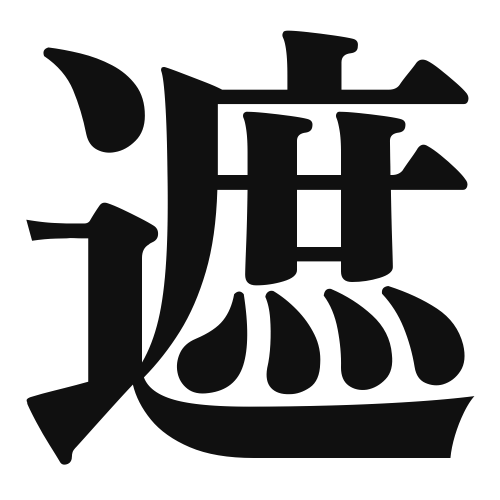1. Overview of Meaning
The kanji “遮” (sha) means “to obstruct” or “to block.” It is often used to describe the act of preventing something from passing through or being seen.
2. Formation and Radical
Formation of the Kanji: The kanji “遮” is a compound character that combines elements to convey its meaning. It consists of the radical “辶” (which relates to movement) and the character “者” (meaning “person” or “one who”). This combination suggests the idea of a person or thing that obstructs movement.
Radical: The radical of “遮” is “辶,” which is associated with movement and travel.
3. Examples of Usage
Common Words and Phrases: Some common words that include “遮” are “遮断” (shadan – obstruction) and “遮蔽” (shabei – concealment).
Example Sentences in Daily Conversation:
- この木が光を遮っている。 (Kono ki ga hikari o shakatte iru.) – This tree is blocking the light.
- 彼は私の意見を遮った。 (Kare wa watashi no iken o shakatta.) – He interrupted my opinion.
4. Synonyms and Antonyms
Similar Kanji: A similar kanji is “妨” (bō), which also means “to hinder” or “to obstruct,” but it often implies a more intentional act of interference.
Antonyms: An antonym of “遮” is “通” (tsū), which means “to pass through” or “to go through,” indicating the opposite action of obstruction.
5. Cultural and Historical Background
Relation to Japanese Culture: The concept of obstruction is significant in various aspects of Japanese culture, including art and architecture, where the idea of blocking or framing views is often explored.
Proverbs and Idioms: One relevant proverb is “遮るものは道を塞ぐ” (sagiru mono wa michi o fusagu), which translates to “Those who obstruct will block the path,” emphasizing the consequences of obstruction in life.
